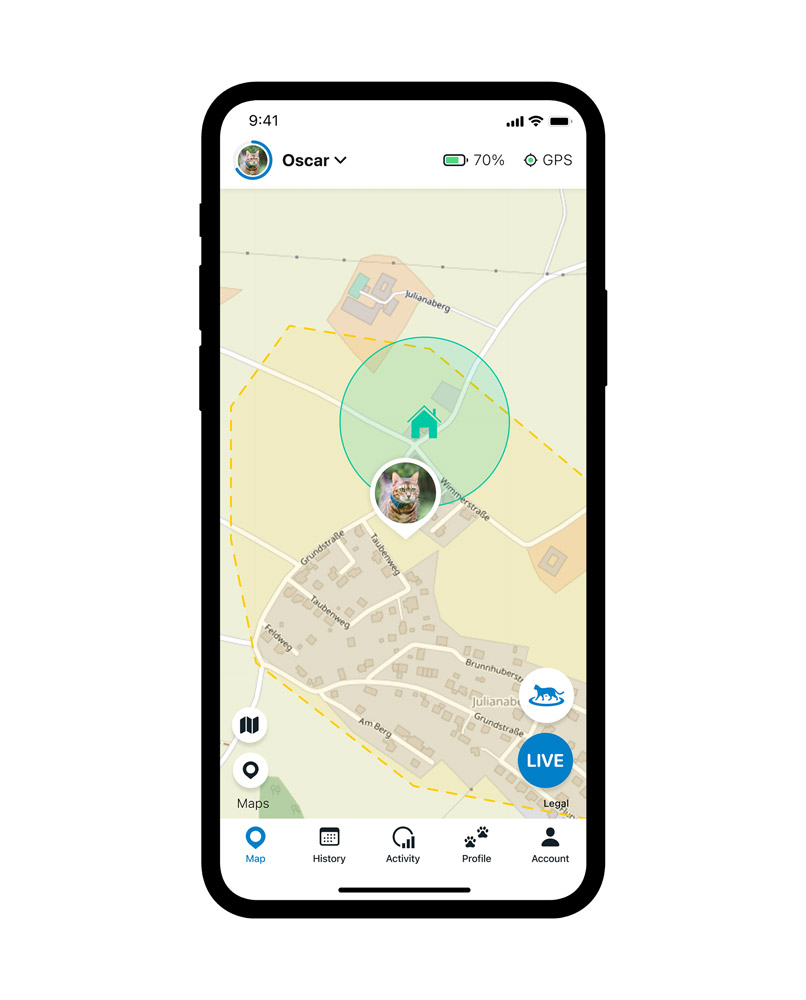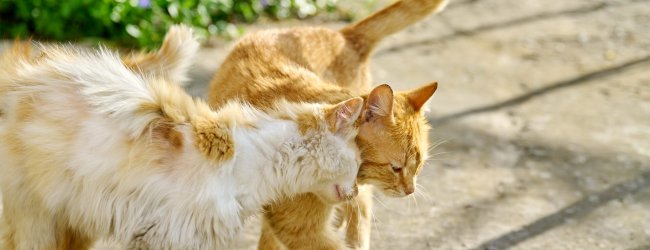Cat Territory Size & Range: How Far Does Your Cat Roam?
Maintaining a territory is a trait common to all cats, both wild and domestic - indoors and outdoors! But with all the dangers that come with the outdoors, how do you keep your wandering cat safe on their adventures?

Whether you’ve got an indoor cat, outdoor cat…or an indoor-outdoor cat – you can bet your home, home office, backyard, or even the neighborhood park is officially cat territory.
Which makes sense for outdoor cats who seem to wander the earth and return home when they feel like it. (Mostly for food.)
But turns out, the same applies for Mr. Muffykins curled up under your couch right now! Even indoor cats living in tiny apartments have their own “territory”. (That they like to rule like the true royalty they are.)
So why do cats have territory? How far do cats roam from home? Let’s learn more about the size and range of cat territory – so you can better care for your feline friend.
- Cat territories & ranges: What are they?
- Why are cats territorial?
- Why it makes sense to know your cat’s territory
- Types of territories
- How does my cat claim their territory?
- How does this affect the way I care for my cat?
- Multi-cat homes & their territories
- Are outdoor cats territorial?
- Outdoor cat & feral cat territories
- How big is a feral cat’s territory?
- How large is a domestic cat’s territory?
- 3 ways to keep your cat safe – no matter where they’re roaming
- Keep your cat safe throughout their range & territory – for good
Cat territories & ranges: What are they?
A cat’s territory is the area that it will defend against intruders. (Aka, most likely other neighborhood cats, dogs, or wildlife.)
A cat’s range includes all the places that it travels to. So, if your cat is allowed to roam freely outdoors, their territory may be your backyard.
But your kitty’s range may include your backyard, a few neighboring yards, and a local park, too. And some of this range may overlap with another cat’s territory. (Which might lead to some nasty turf wars down the line, if you aren’t monitoring your cat’s whereabouts.)
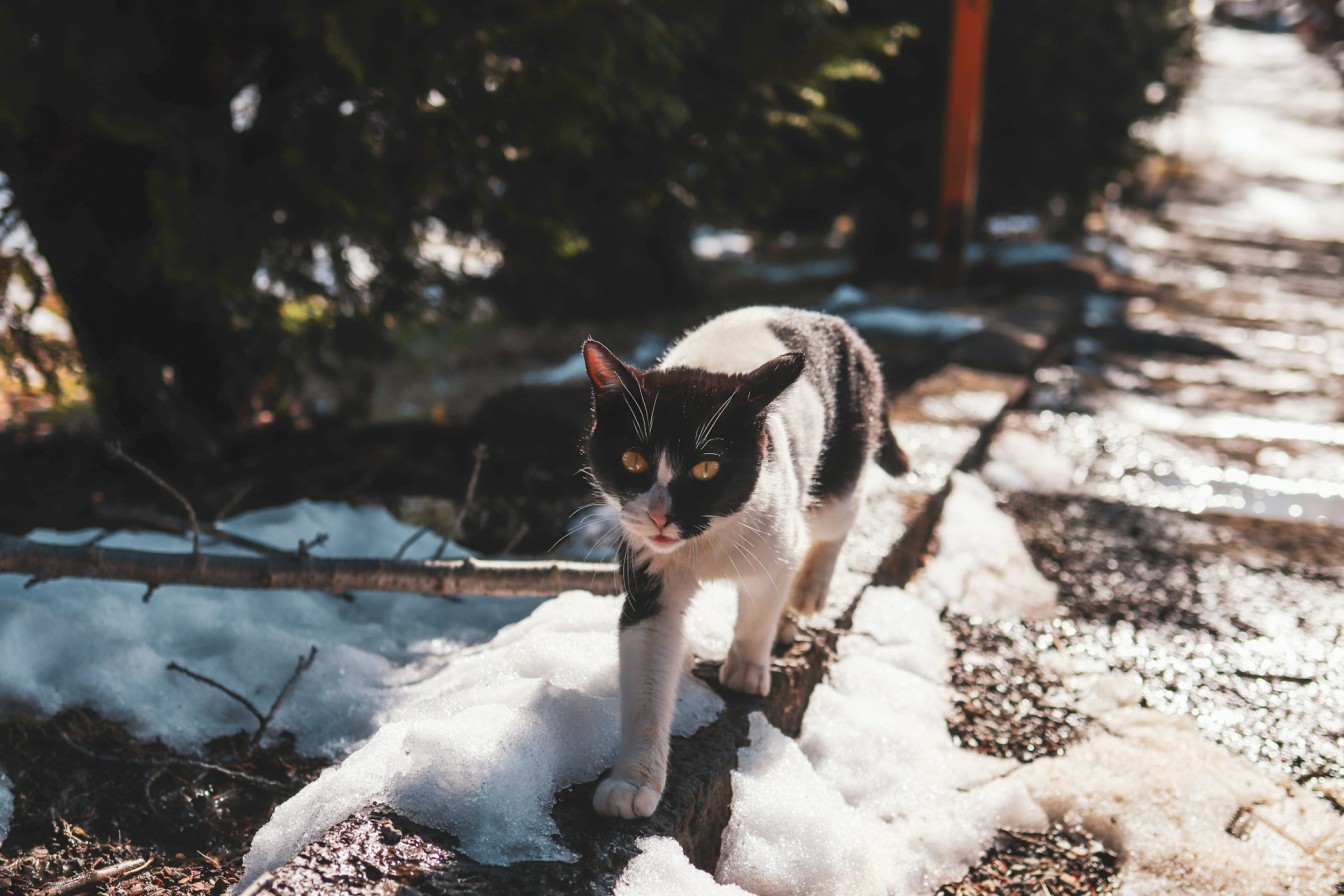
💡But if you’re tracking your cat’s every step in real-time – you can better intervene if you notice them wandering off too far from safety.
Like, for example, with a cat GPS tracker that works over an unlimited range – and that’s even saved the lives of cats around the world.
Why are cats territorial?
All cats, including lions, tigers, cougars, and your little fluffball, are territorial. Maintaining a territory is a survival tactic that wild cats use to secure a hunting or breeding area. This ancestral behavior is innate in your cat.
At the same time, your cat’s lifestyle does tend to play a role in exactly how territorial they are.
- Solo indoor cats, which have a daily meal ticket (aka, you) and an enriched environment at home might not be as tempted to stake a claim.
- Outdoor cats that roam the neighborhood, on the other hand, are more likely to be territorial.
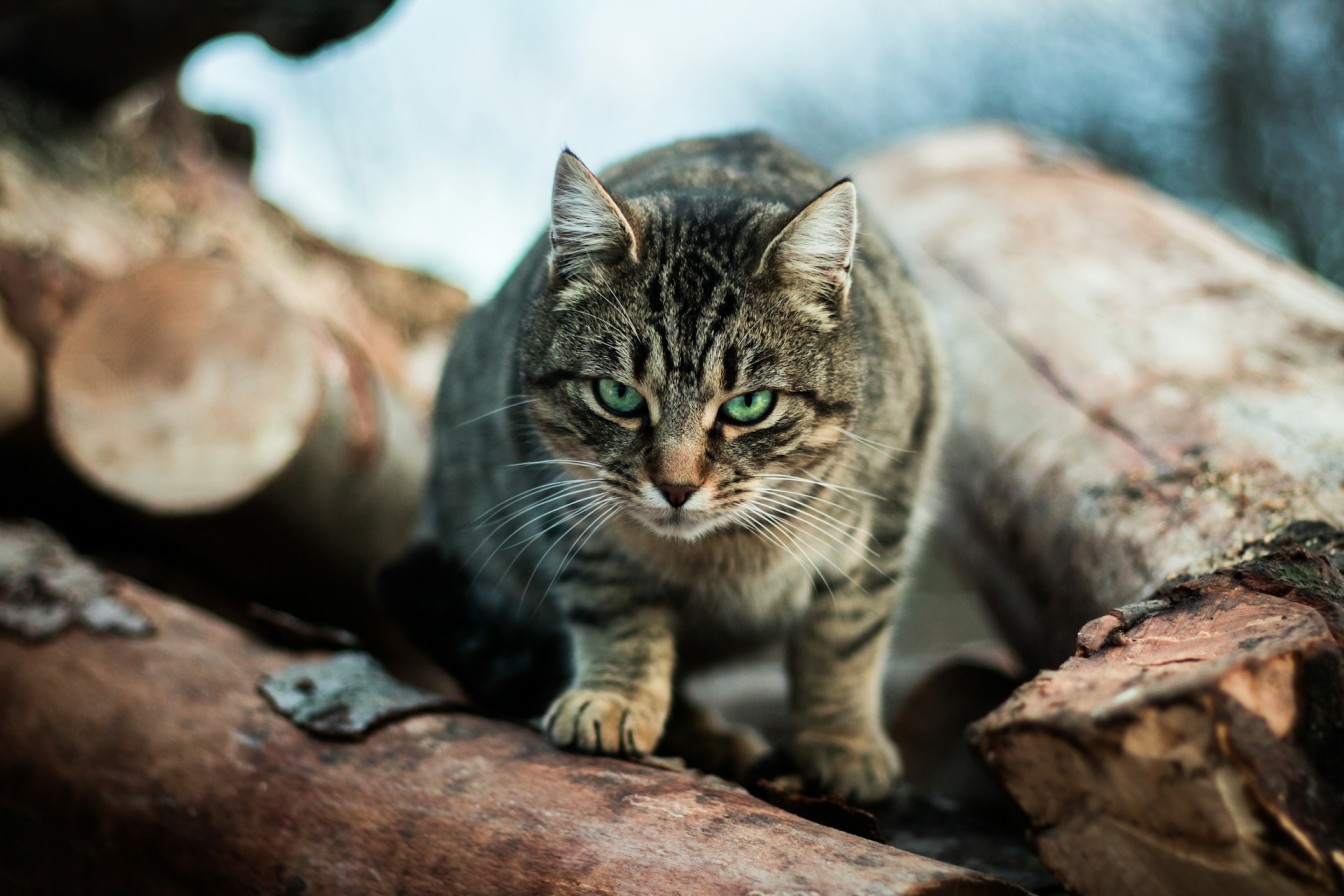
Maintaining a territory is hard work, but it ensures that a cat has access to adequate food and potential mates. To maintain a territory, your cat must patrol it, scent mark the borders, and defend it against trespassers. (Especially other cats.)
Outdoor domestic cats will have larger ranges than indoor cats. Feral cats (which have little or no interaction with people) will have much larger territories. Because they must find or hunt for their own food.
💡Besides tracking your cat in real-time and over an unlimited range, your trusty Tractive device even helps you better understand your cat’s territory.
Pictured here is a cat’s territory outlined (in yellow) on the Tractive GPS pet tracking app. So you can better understand where your cat likes to wander off.
Why it makes sense to know your cat’s territory
Your cat’s immediate territory might not include any threats – unless you’ve checked and double-checked for:
- Aggressive pets at your neighbors’
- Neighborhood dumping grounds, which might include foods harmful to cats
- Poisonous plants – in your backyard and elsewhere in your cat’s territory
- Areas where residents might’ve used harmful substances like pesticide
- Pet thieves, who might be lurking around every corner
- Densely forested areas where your cat might roam off to hunt – and get lost in
…and the never-ending list of dangers your cat might face while roaming around outdoors.
⚠️ According to researchers at the University of California-Davis, indoor cats may live between 15-17 years. On the other hand, purely outdoor cats might only live 2-5 years. Unless, of course, you’re taking precautions and staying on top of their safety.1
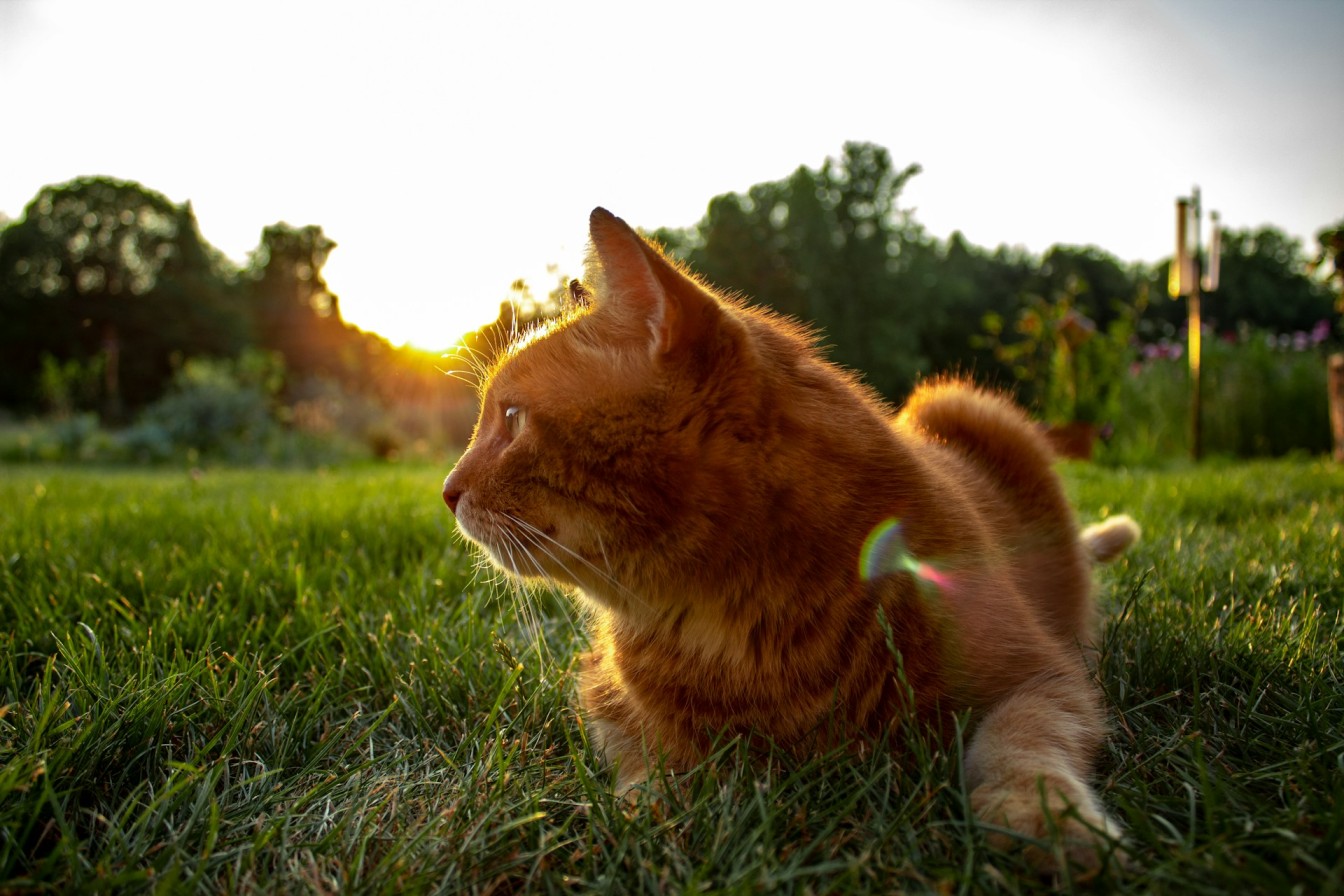
💡Now imagine being able to tell where your cat’s off wandering – with just a glance at your phone?
Or getting an instant escape alert the minute they step out of their regular territory…and are headed into a dangerous “no go zone”?
Or learning your cat’s favorite spots – for hiding, hunting, or just hanging out – so you know where to look first if they go missing?
You can get all this and more with your very own Tractive CAT Mini GPS – built with love for cats and for your peace of mind as a cat parent.
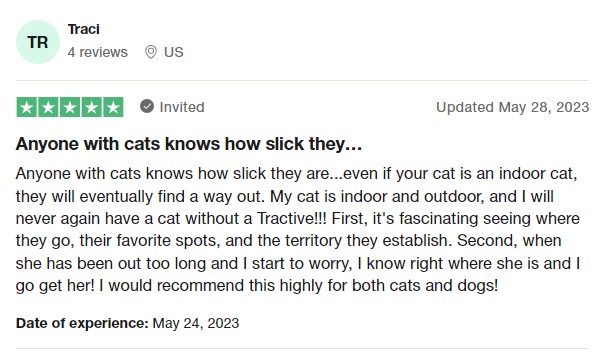

Know everywhere your cat goes
See where they are in real-time, no matter how far they go. Get alerts if they roam too far home. Find out where they’ve been and discover their favorite spots. Let others track with you.
Types of territories
Cat territories fall into a few general categories and vary in size depending on the cat’s indoor or outdoor lifestyle.
- A core territory is a place where cats feel safe and secure. Activities like sleeping or toileting, when a cat is vulnerable to attack, usually take place in this core territory.
- A hunting territory may take a domestic cat farther afield. This territory is claimed by your cat as their hunting ground. (Where they search for mice, voles, birds, and other creatures to eat.)
- Shared or common territories are places that your cat is OK sharing with others. Including people, other cats, dogs, or other pets. An example of a shared territory could be your living room or your garden, where the whole family, including pets, hangs out together.

How does my cat claim their territory?
You may not realize it, but when your cat rubs up against you, they are claiming you as part of their territory. Scent glands on the cheeks, forehead, chin and at the base of the tail deposit natural pheromones to “mark” you.
The same is true when your cat rubs up against furniture, shoes, and other objects. Cats are often compelled to mark you when you come home from work or school, because you may not “smell” right. They want to be clear that you belong to them!

When an intruder breaches your cat’s territory, don’t be surprised if your normally calm kitty turns into a ferocious beast. They might raise their hackles or hiss, baring their teeth – or even lunging at the intruder! Cats have been known to leap onto the backs of large dogs to make their point (which is “Get out of my space!”)
Cats also mark their territory by scratching objects with their front paws, which contain scent glands. Outdoor cats might scratch tree trunks or wooden posts. To avoid having your indoor cat shred your sofa, provide a scratching post. Entice your kitty to use the post by rubbing catnip on it.
Read more: How To Stop A Cat From Scratching Furniture – Couches, Carpets & More
To keep track of activity in their territory, cats patrol the boundaries of their space at least once a day, scent marking or scratching as needed. Kitties are vigilant defenders of their territory!
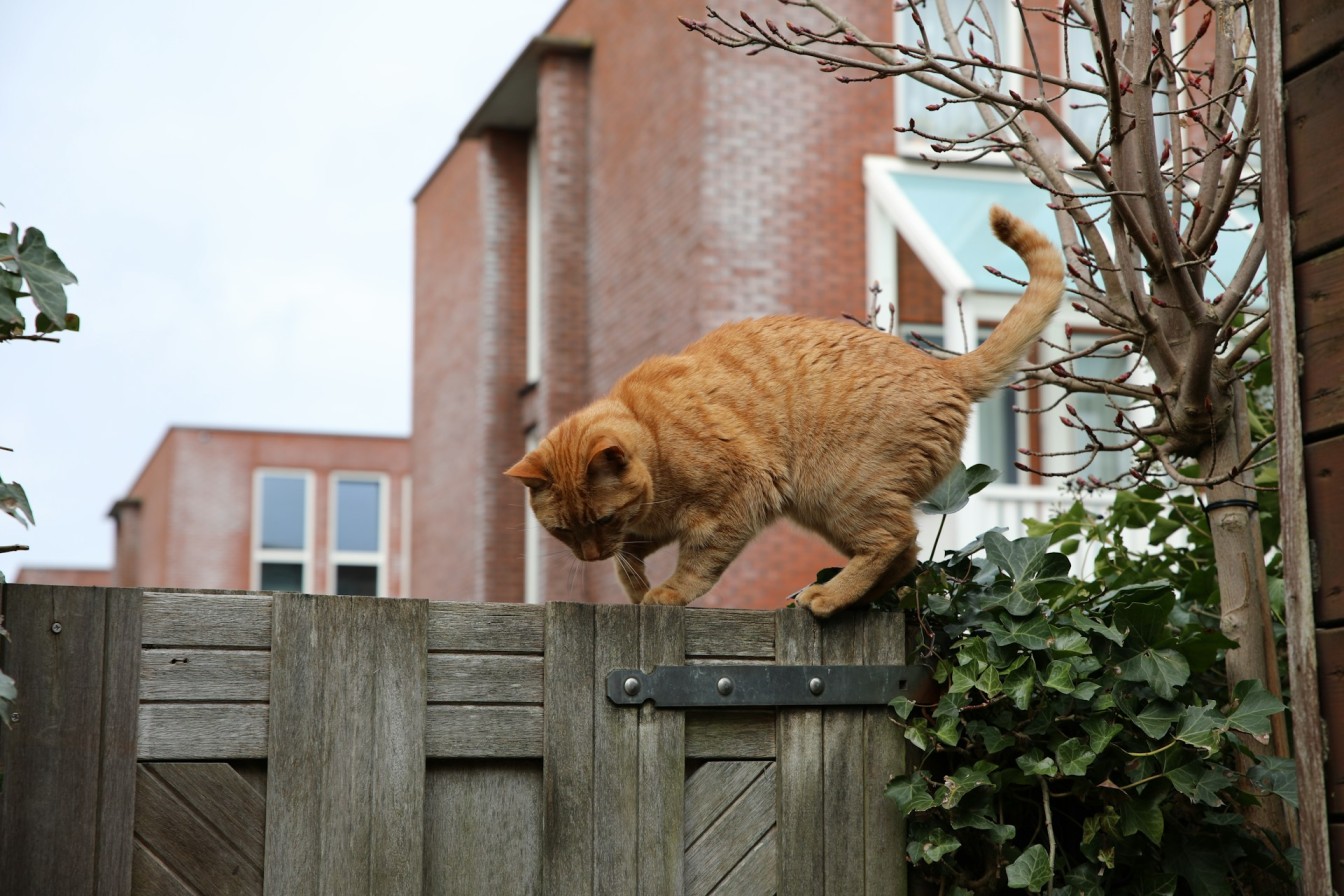
(And if you’ve invested in a cat GPS tracker, you’ll see exactly where your cat patrols each day – so you can be 100% sure they’re safe.)
Urine spraying by cats
Besides rubbing against objects, urine spraying is another technique used by cats to mark their territory.
Outdoor cats spray vertical surfaces such as shrubbery, fence posts, rocks, or tree trunks by raising their tails and releasing a horizontal burst of urine against the object. The scents within the urine send a signal to other cats saying “This is MY territory – stay out!”
(The urine scent degrades over time, so a cat will add more urine every few days if they notice their scent diminishing.)
If you detect a persistent musky or skunky odor in your outdoor shrubbery or gardens, it could mean that a cat (possibly yours) regularly sprays there.
💡The stinky shrub is a cat’s version of a social media post, announcing their presence and ownership of this location.
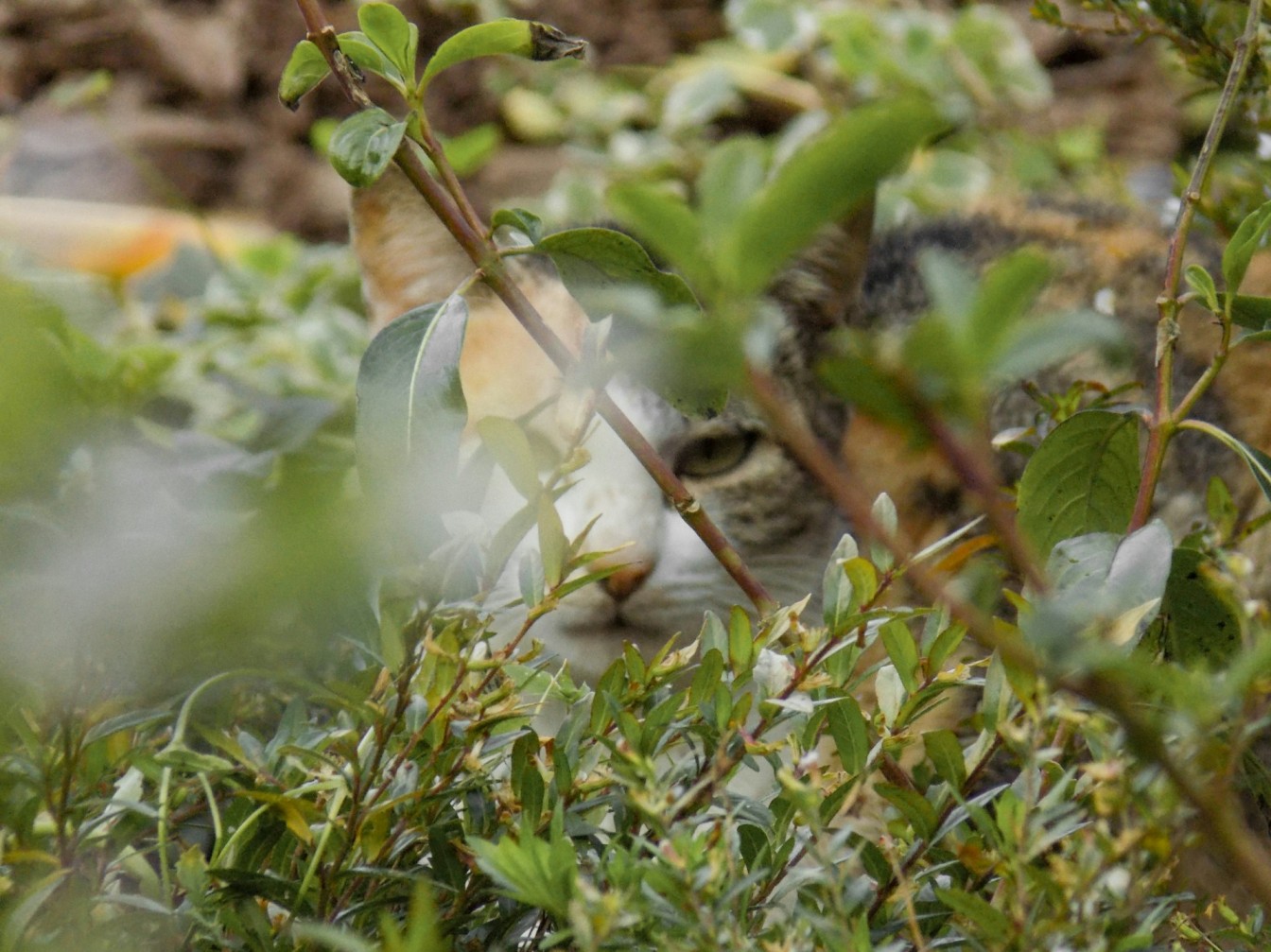
Obviously, problems arise when cats spray urine indoors.
- Spraying could be a sign that another cat is in the vicinity, perhaps outside an open window or on the front porch.
- So your cat feels compelled to spray to show the intruder who’s boss.
⚠️ At the same time, indoor urine spraying could mean that your cat is stressed or has a medical condition, like a urinary tract infection.
If your cat sprays indoors, talk to your veterinarian about possible causes and solutions to this behavior. Medications or pheromone diffusers can help to calm a cat and reduce the urge to spray.
Read more: UTI in Cats: Signs, Symptoms & Steps You Can Take
How does this affect the way I care for my cat?
Whether you like it or not: all cats will define and defend their territory in some way. (By rubbing against you or the furniture, scratching, or urine spraying.)
- For indoor-only cats, make sure that your kitty has plenty of appropriate opportunities to scratch or mark their territory, such as a cat tree or scratching pole.
- Some cats enjoy perching up high where they can view all the goings-on in their territory.
- Make sure to tire out your cat with regular playtime – so they’ll be less likely to scratch around your house (or your neighbors’ begonias) as part of their territory.

Read more: How To Get A Cat To Exercise: Keeping Our Feline Friends Happy and Healthy
Multi-cat homes & their territories
If you have two or more indoor cats in your home, they may not be willing to share a territory..unless they’re siblings.
You may need to help define their separate territories and reduce fights if you notice your cats:
- Run away from each other
- Hiss at each other
- Sleep in separate areas
- Or try and act dominant over the other
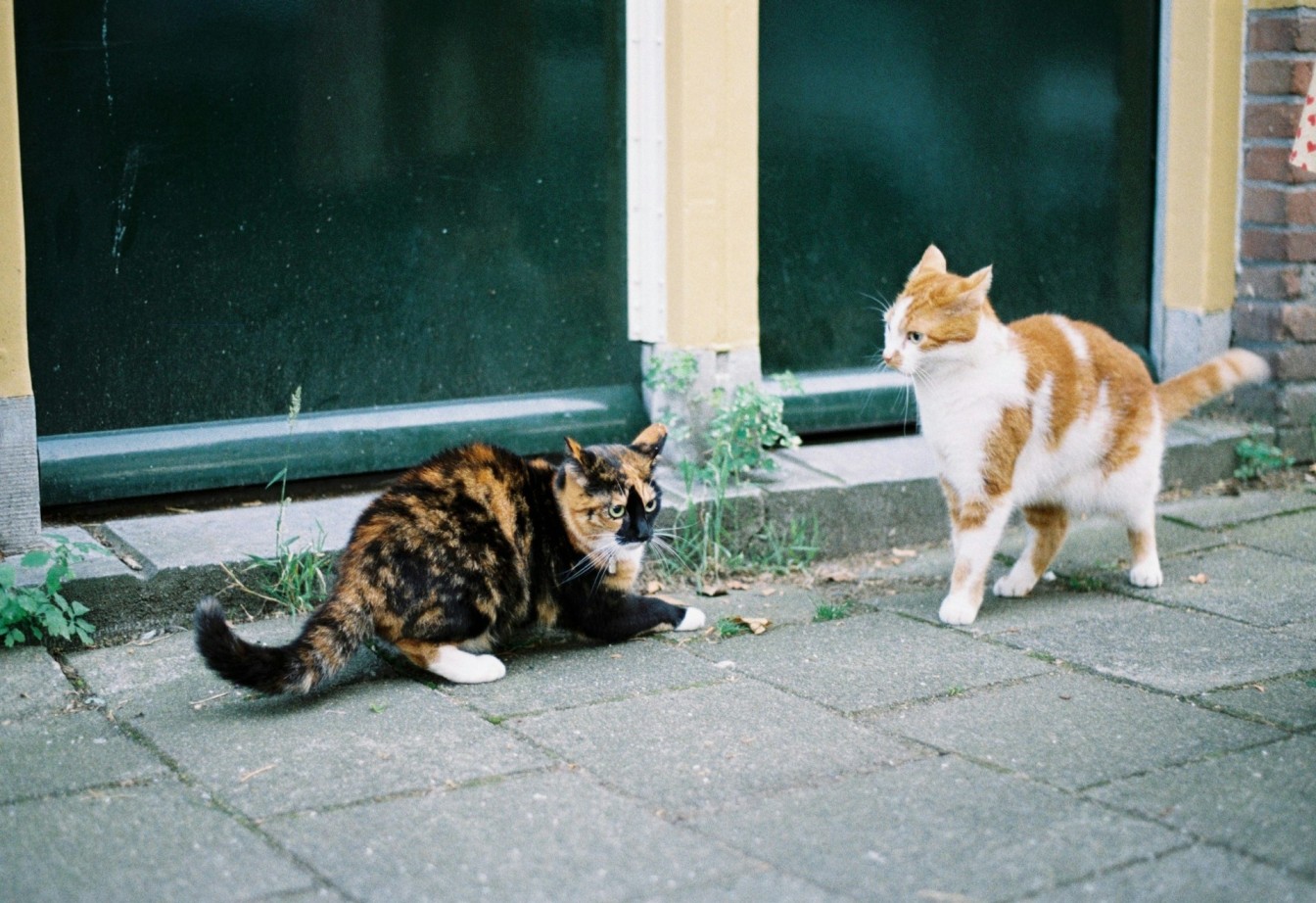
Just remember: disputes between multiple cats in your home can lead to aggression or even scent-marking with urine as the cats try to define their own space.
So start by feeding each cat in a different location and setting out multiple litter boxes.
Then, give each cat a safe and secure place to sleep, where they can relax away from other household pets. These cozy spots should not box in your cat. Always provide an escape route for your kitty.
Are outdoor cats territorial?
Outdoor cats have a more intense need to establish and maintain a territory. After all, there are many other animals, people, and objects crossing into their territory on a daily basis. If other cats stroll through their territory, outdoor cats will be compelled to scent mark after the intruder passes through to override their scent.
Similarly, unaltered cats (those that have not been spayed or neutered) are likely to roam longer distances or establish larger territories. The scent marks they leave carry greater importance, because in addition to marking the boundaries of the territory, they signal the cat’s availability for mating.
Read more:
- Outdoor Cat Care In Winter: How To Keep Yours Safe
- Cat In Heat? What You Need To Know.
- Is My Cat Pregnant? What To Watch Out For
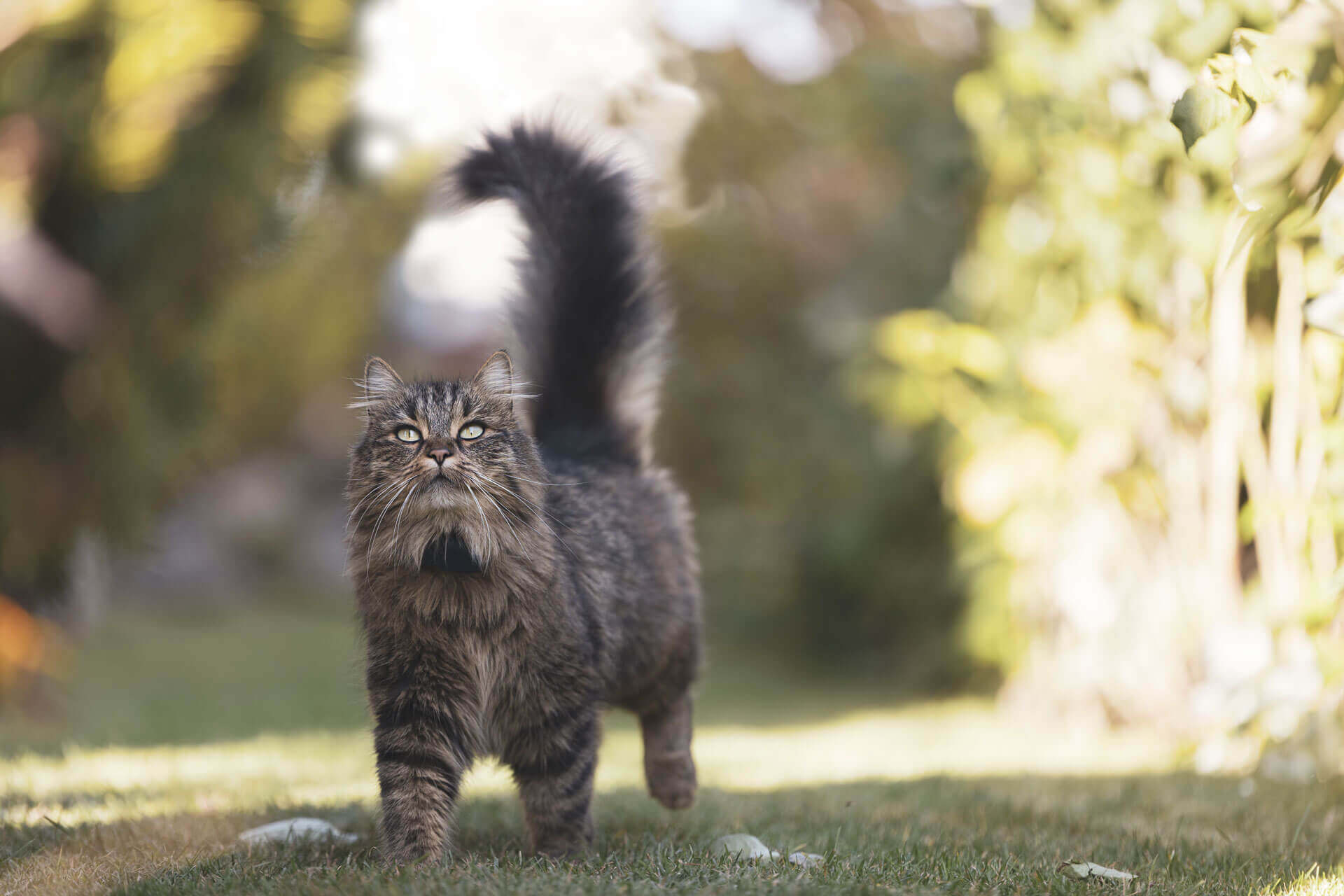
Outdoor cat & feral cat territories
If you own an outdoor cat or a kitty that explores the great outdoors for part of the day, your cat may encounter feral cats while they are out exploring. But what’s the difference between outdoor cats and feral cats?
Outdoor cats
Many outdoor cats are owned or cared for by someone and they have regular human contact. For example, they may be fed regularly, receive veterinary care, and might go indoors for part of each day or night.
Basically, these cats have a safe home base and therefore their territories may not be very large – a backyard garden or deck may be enough.
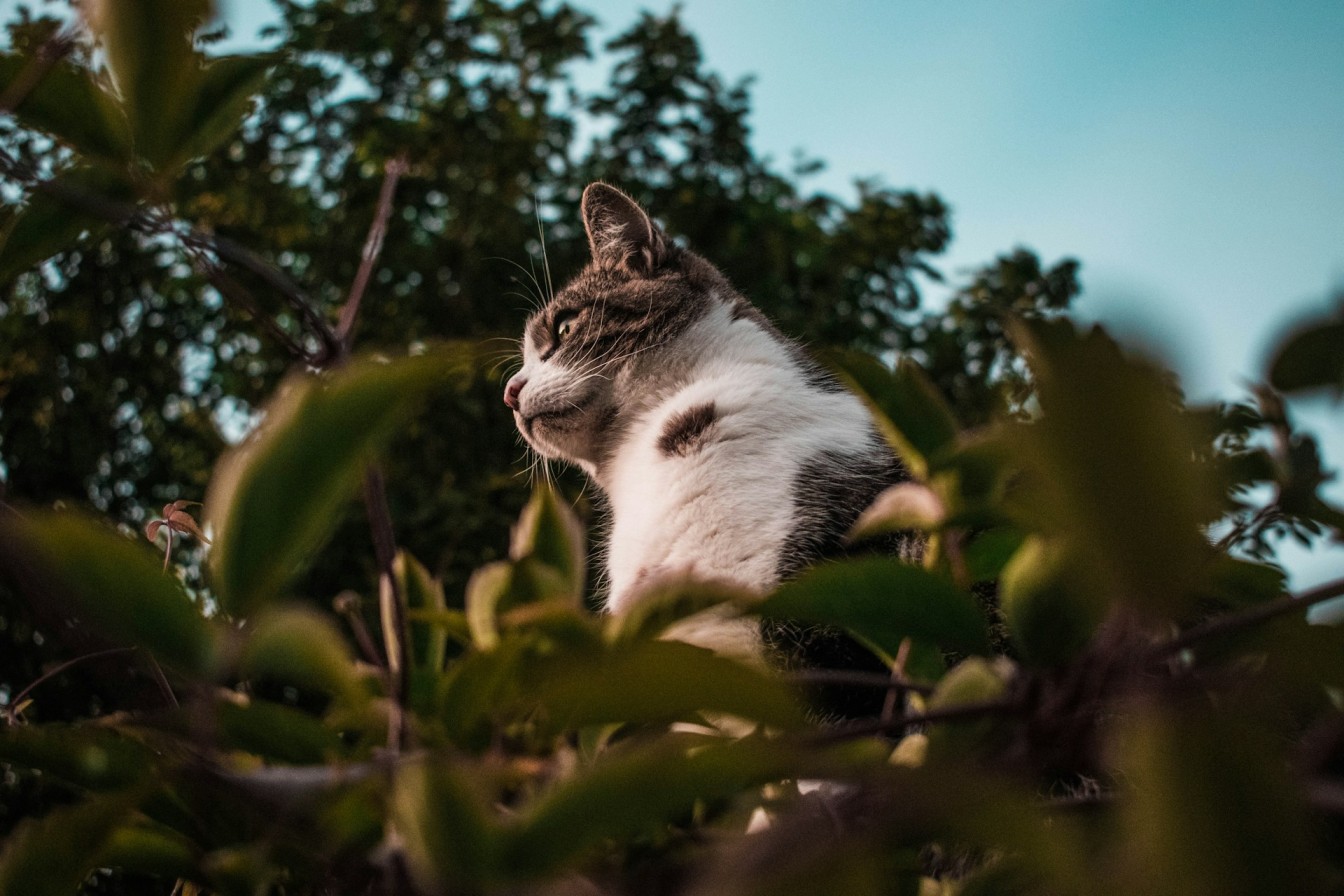
Feral cats
Feral cats often have much larger territories and very extensive ranges.
These cats may never have had contact with humans, or if they did, it was minimal. Feral cats are often afraid of people and do not seek interaction with humans.
These cats hunt and find their own food, so their large territories reflect the need to have many food sources available.
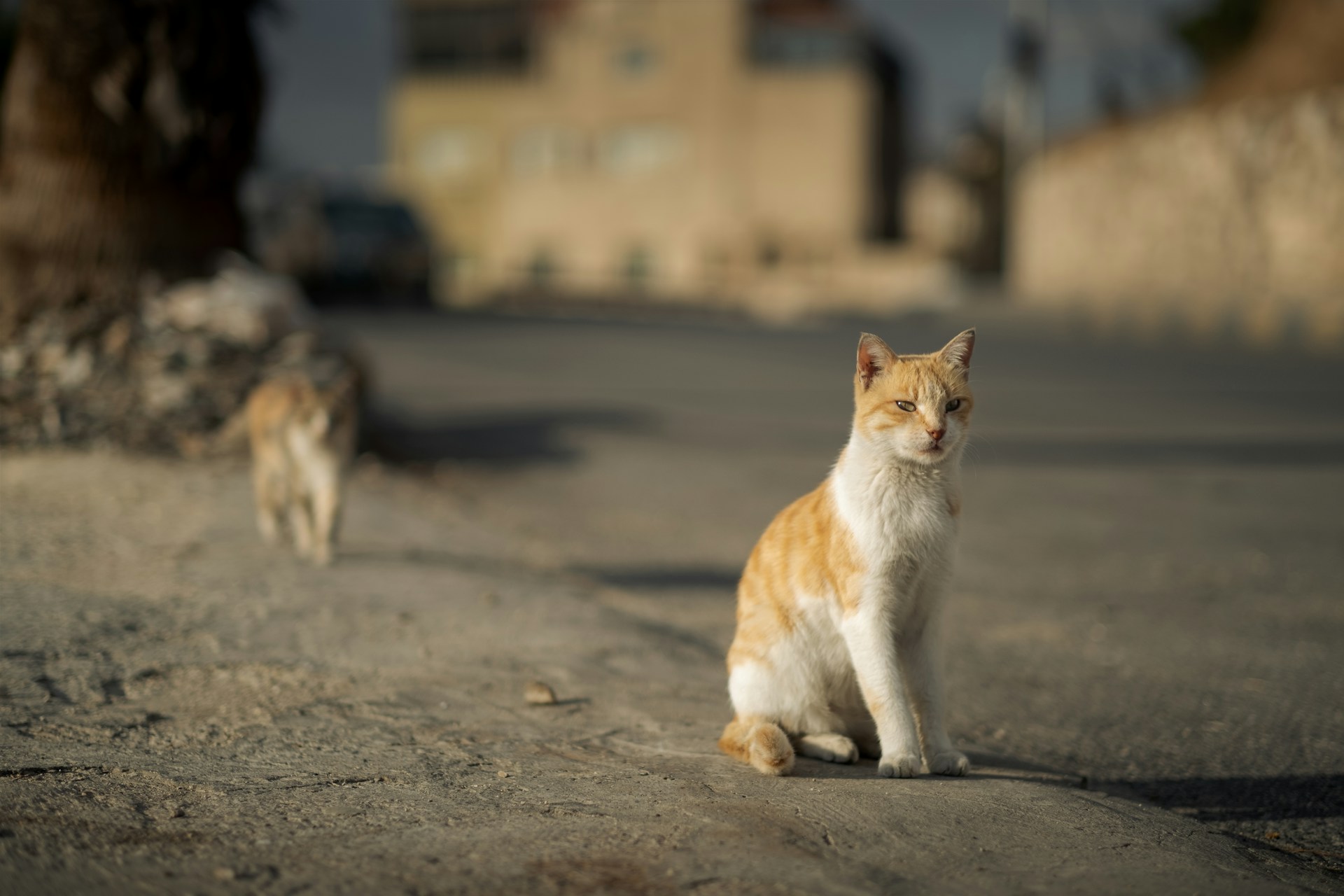
How big is a feral cat’s territory?
The extent of a feral cat’s travels depends on the availability of food and mating partners. Some cats may walk miles each night in search of a meal or patrolling the borders of their territory.
Estimates of feral cat territory sizes range from two to 1,000+ acres. Males have larger territories than females. The territories of a male cat may overlap with those of several females, increasing his odds of finding a mate.
How large is a domestic cat’s territory?
The average male outdoor cat may have a territory of a few acres, while a female’s may be much smaller. Some studies show that cats walk a few dozen yards to more than half a mile per day.
But that said, the size of cats’ territories can vary widely depending on:
- The environment
- The availability of food
- And the cat’s reproductive status.
What is the radius of a cat’s territory?
Though cats’ territories are rarely circular, you may find that your outdoor kitty roams up to a mile away from home. A cat’s daily travels are dictated by roads, fences, gates, or other animals in the neighborhood that they wish to avoid, such as a big dog.
However, a pet cat – whether outdoors full-time or indoor/outdoor – does not need to roam far because they do not need to hunt for sustenance (although they may capture small prey for “fun”).
- They know that their food dish will be filled with a tasty meal each day. (So no real need to wander off too far – though it could happen anyway.)
- Domestic pet cats are also often spayed or neutered, so the urge to mate does not compel them to wander in search of a mate.
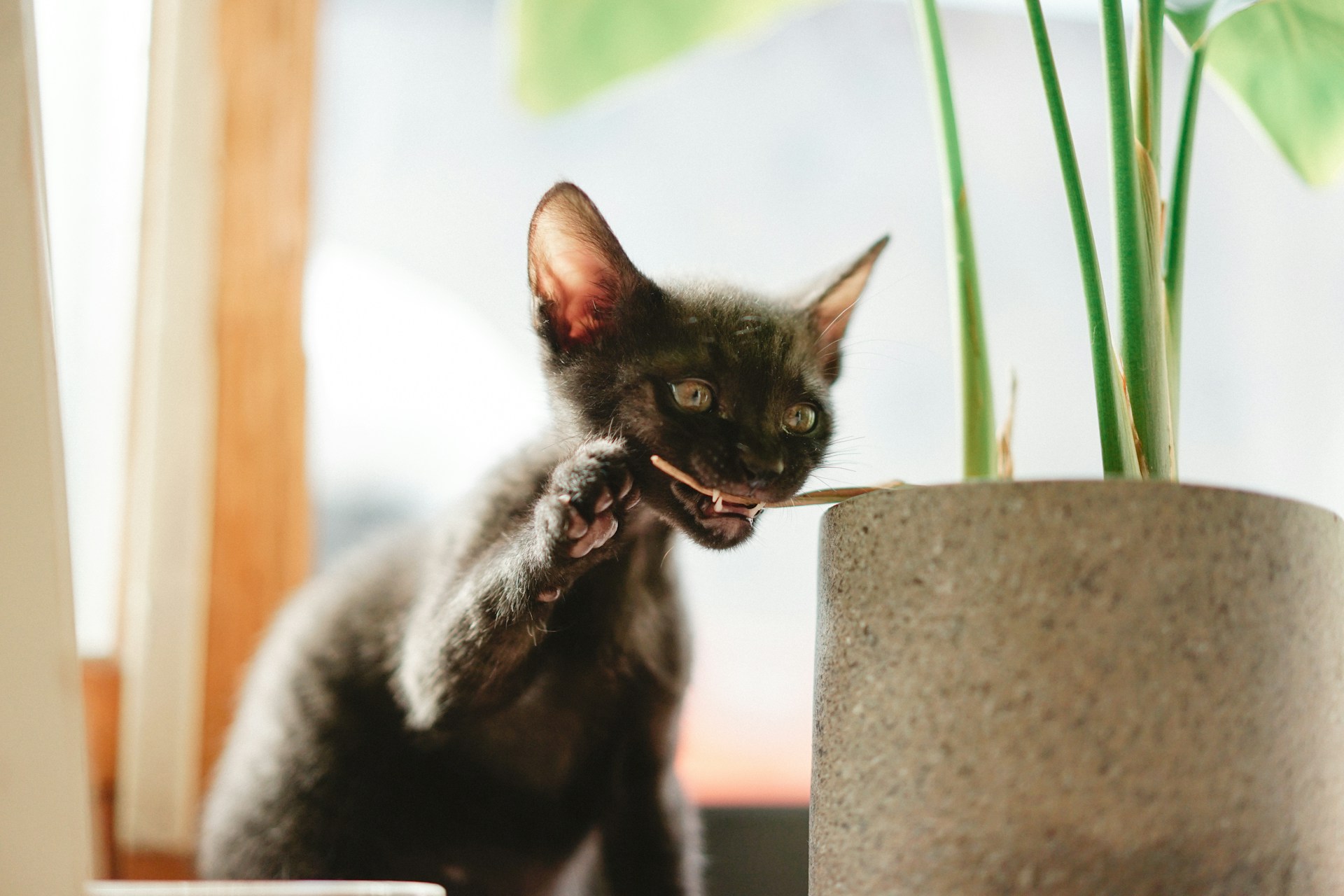
But with all the reasons cats run away from home, it’s always worth it taking precautions to keep them 100% safe.
3 ways to keep your cat safe – no matter where they’re roaming
Now if you aren’t familiar with your outdoor cat’s territory and range, it might be a bit alarming seeing them wander off into the woods or wilderness.
So here are 3 essential steps to both figuring out their habits and planning ahead for an emergency (like if they get lost) – without compromising on their freedom or independence.
Get your outdoor cat microchipped
Both indoor and outdoor cats can benefit from a microchip. They work like a permanent ID tag for pets – and might even be legally required in many US states and countries around the world.
Now if your outdoor cat ends up wandering a bit too far into their range and gets lost:
- A microchip can help a vet or a local shelter identify you as the rightful owner if they pick up your lost cat. (Because by scanning your cat’s microchip, they can find your contact details.)
- For this, you should keep your contact details updated on your local microchip database.
⚠️ Approximately 71% of cats entering animal shelters end up being euthanized – because they’re more likely to enter a shelter without any sort of identification.2 Don’t let your cat be one of them!
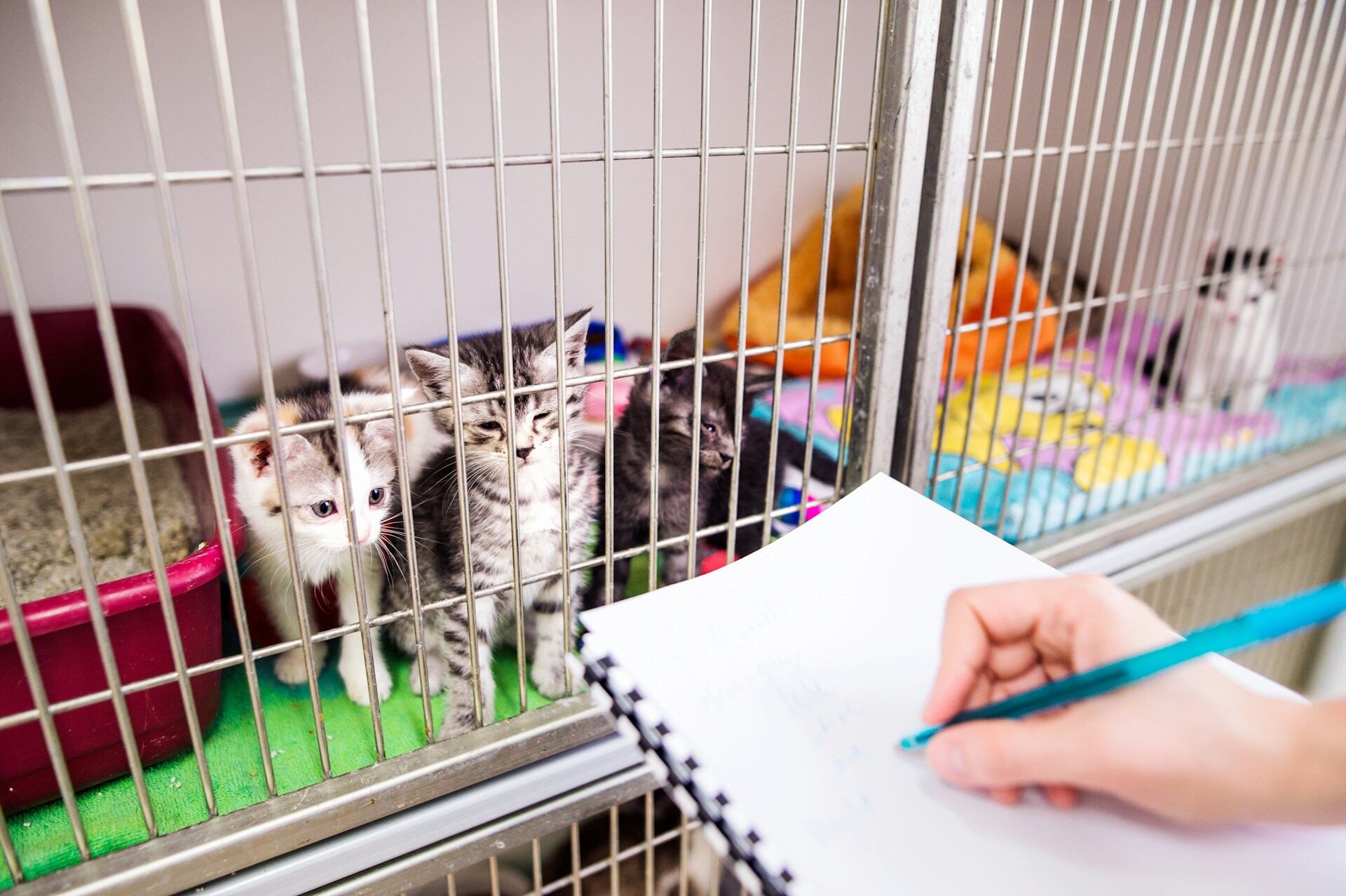
Microchips are also more secure than a collar and ID tag (though we’d recommend you put these on your cat as well.) Since a vet can painlessly implant one into your cat’s shoulder blades, a microchip isn’t likely to fall off or get lost. (Like a collar or ID tag might.)
Just remember: a microchip can’t actually track your cat in real-time. It’s only an identification device – not a pet tracker.
That’s where a cat GPS tracker can help you figure out where your cat’s off wandering – with just a glance at your phone.
Read more:
Figure out your cat’s favorite hangout spots
Your Tractive GPS doesn’t just help you track your cat live and in real-time. Rather, it can actually help you understand your own cat’s behaviors better.
Because even the most adventurous outdoor cat will always tend to have their favorite spots – your neighbor’s backyard, the nearby park, that one patch of woodland, or even a far-off barn, miles away. Where they like to hide, hunt, or just hang out.
And why does this matter? Well, because in an emergency – like if your cat hasn’t returned home by mealtime – and you’re now starting to panic, thinking they’re lost…you now actually know where to start looking first.
(And in general, the sooner you begin your search, the more likely you are to find a missing cat.)

It’s where Tractive’s Heat Map & Location History can be a lifesaver.

With it, you can find out where your cat likes to spend most of their time – whether it’s for hiding, sleeping, visiting a neighbor who doesn’t know they’re on a diet, or chasing prey for miles.
Most cats tend stay within 1500 feet (or a half kilometer) away from home. But it could end up being even further if they’ve sniffed out a female in heat or have gotten into a territory war.
Most recently, the San Diego Feral Cats Coalition even rescued a litter of sick kittens – and reunited them with Mama cat. (With a little help from Tractive.)
With a Tractive device strapped to her collar, they followed Mama Cat’s movements via her Heat Map. Tracing where she’d dropped each of her kittens – and then finding them, taking them in, and rehoming them to warm, safe forever homes.
Read more: This Family of Sick Kittens Was Rescued With The Tractive GPS
Keep an eye out for your cat’s health
Now you want to be a good cat parent and allow your outdoor cat to roam around and enjoy their independence. But the outdoors come with dangers beyond just passing vehicles or aggressive pets – but also:
- Toxins (like, say, pesticides sprayed on your neighbors’ plants – which your cat might take a bite, lick, or taste of)
- Certain plants that are poisonous to cats (whether in your own garden or elsewhere in your neighborhood)

- Environmental allergens (like pollen), which can cause a major sneezing episode and other respiratory issues in cats
- Pests, like ticks which can create severe skin infections
- And even the chance your cat might end up eating something fatally toxic from a garbage bin.
Read more:
- Which Plants Are Poisonous To Cats?
- Cat Pollen Allergy: What To Do If Your Cat Is Allergic to Pollen
- Ticks On Cats: Prevention, Symptoms And How To Get Rid Of Ticks On Cats Safely
- What Can Cats Not Eat? (And Why Not?)
- How To Tell If Your Cat Is Sick: Signs Your Feline Friend Isn’t Feeling Well
In times like these, how do you keep track of your wandering cat’s health and wellbeing? There’s always the chance they’ll come home with something potentially infectious – and which you might completely miss out on. (Because of how cats tend to mask signs of sickness or pain.)
That’s where your Tractive device’s…
Activity Tracking & Health Alerts
…have you covered. Because all too often, the first sign your cat might be sick is if they’re less active than usual. (Or just seem more lethargic and out of it.)
💡 It’s why vets recommend tracking your pets’ daily activity – so you can catch on to a health emergency much in advance. (And avoid an expensive medical bill down the line.)

Besides GPS, your trusty Tractive GPS comes equipped with a built-in motion detector. Which picks up on your wandering cat’s daily activity – and helps you understand how active they are on the regular.
Now you’ll more quickly and easily catch on to a drop in their active minutes – even if they seem normal and healthy otherwise. (Which could mean they might be sick, injured, pregnant, or more.)
And if you’ve missed tracking your cat’s daily exercise? You’ll get a Health Alert, nudging you to keep an eye out for a change in your cat’s behaviors – and get them to a vet on time.

“It can be easy to miss out on changes in your pet’s regular activity – or just if they’re on the move more or less than usual.
So we’ve set up Activity Degradation alerts for when your dog or cat’s active minutes drop significantly. They can help you intervene in a situation where your pet might be struggling with an infection or even just pain.”
– Sebastian Raab, Product Manager at Tractive & occasional pet sitter


Track your cat’s wellbeing
See how they’re doing at a glance with Wellness Score. Know if they’re getting enough exercise. Spot nap patterns. Detect issues early and keep them healthy.
Keep your cat safe throughout their range & territory – for good
On one hand, too much outdoors time can put your cat at risk for many dangers.
On the other hand, too much indoor time and your cat is likely to get bored, anxious – and destructive.
So no matter how far your cat likes to roam, make sure to stay on top of their safety – and figure out their individual habits and temperament. (To figure out their wandering habits that much better.)
For example, you could:
- Map out your cat’s range and territory with a cat GPS tracker, like Tractive’s. So you can understand how far your cat likes to wander. (And intervene if you see them wandering into any dangerous areas.)
- Separate multiple cats in the same household – so they can each defend their own “territory.”
- Plan ahead for urine spraying by keeping enough scratching toys around for your cat (to leave their scent marks)
- Consider getting your cat spayed or neutered to prevent them from any…reproductive wanderings.
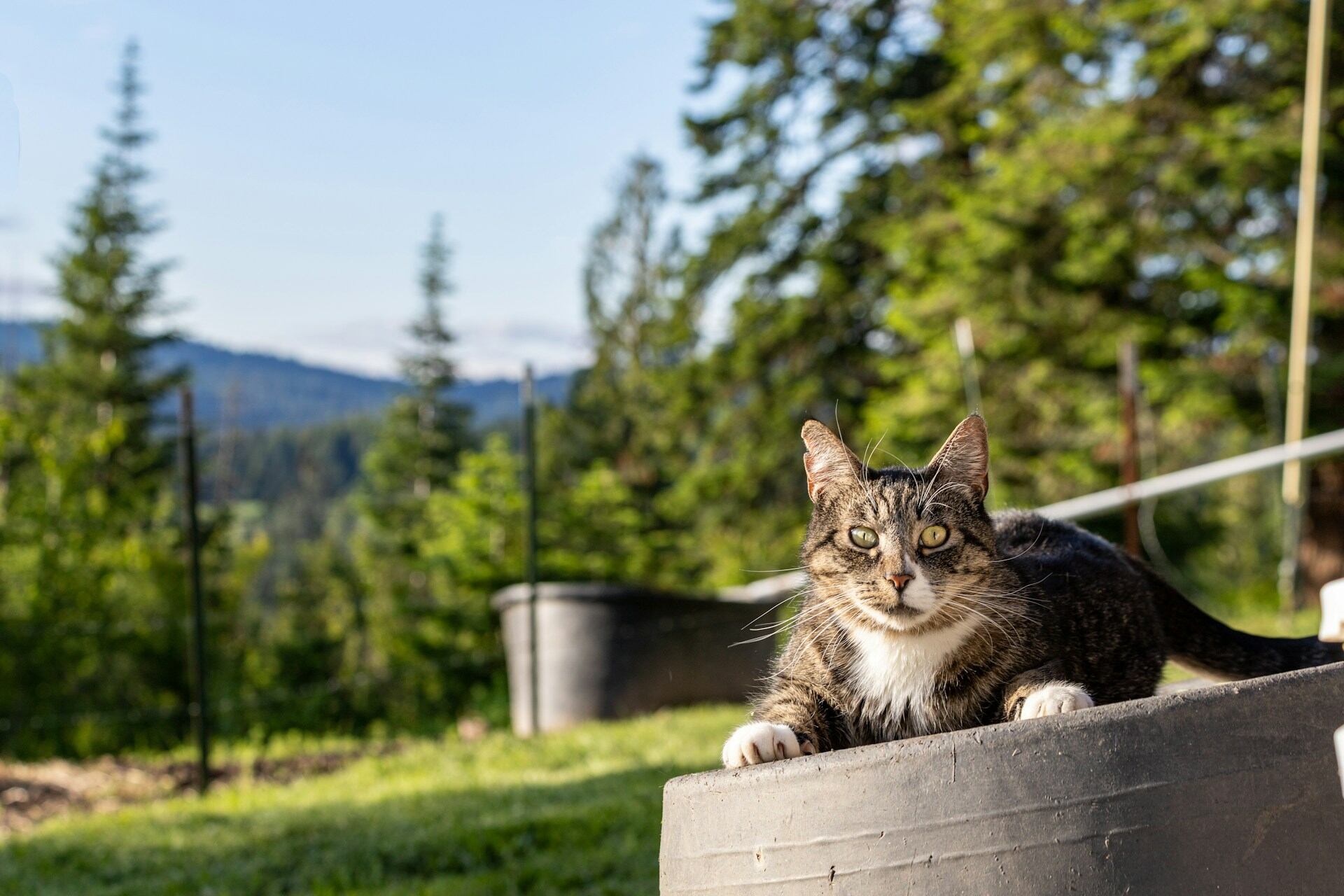
- Ensure your outdoor cat is microchipped to prevent them from ending up in an animal shelter where they might be euthanized if they don’t have any identification.
- Figure out where your cat likes to hang out the most with Tractive’s Location History. So you know where to look first if they’re outdoors longer than usual and you’re suspecting they’re missing.
- Track your outdoor cat’s activity to catch on to a drop earlier – and get them to a vet for a preventive checkup early. (Because you never know what they might pick up from their wanderings.)
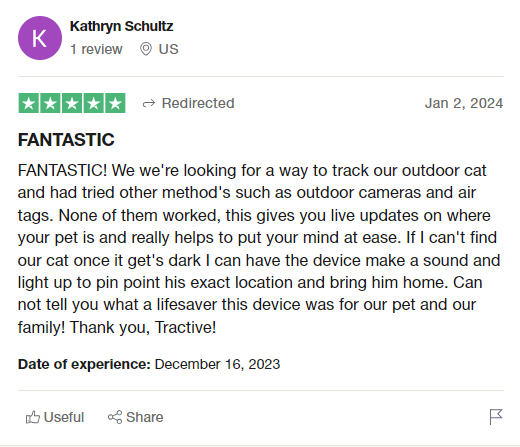
Track Your Cat With Tractive GPS
Want to see the Tractive CAT Mini in action?
Here’s a super short, super sweet video covering all its perks! From escape alerts to Location History to Activity Tracking…everything you need to keep your outdoor cat safe while they’re out patrolling their territory and exploring their range.
And if you’ve liked this post, share it with a friend or a loved one – and let’s help build a safer, kinder world for our furry friends together.
